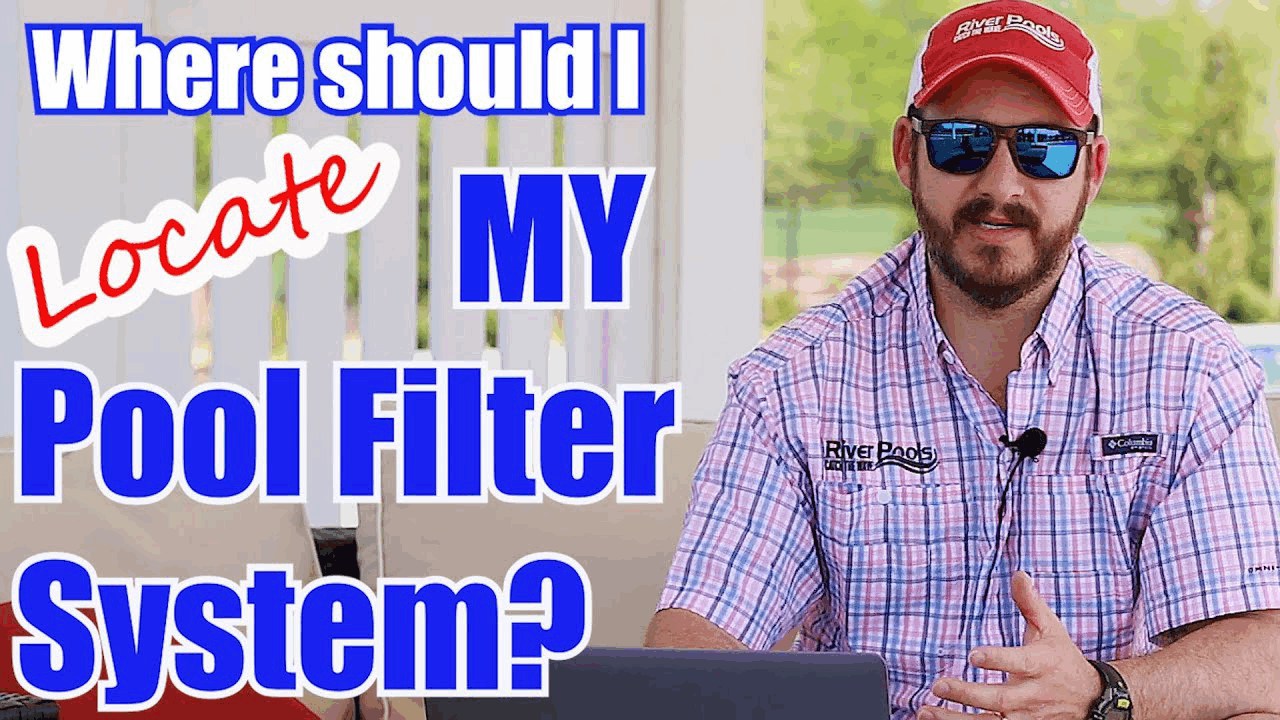One of the first questions asked by pool shoppers is where they should locate their pool equipment. Before we answer that question let's cover some basic information about pool pump and filter systems.
A basic filter system consists of a pump, filter, and sanitation system such as a salt chlorinator, ionizer, or erosion-fed chlorinator (chlorine tablets).
-
- This basic equipment usually takes up an area of approximately 4'x4'.
- It is usually located within 40' or 50' of the pool but could be further away if needed.
- Pool heaters, when purchased, are usually located directly beside the filter system and take up another 4'x4' area.

Here's a picture of a common filter system with a pump, cartridge filter, and salt chlorine generator.
Now back to our question: Where should pool equipment be placed?
Here are 5 guidelines to help you find a suitable pool equipment location.
Remember that these are only guidelines and many projects cannot accommodate one or more of these suggestions. Ultimately, you and your installer will need to determine the best location for your specific project.
How do I know where to put my pool filter system?
- Pick an inconspicuous place
- Locate equipment at the house if possible
- Try to keep the equipment at the level of the pool or lower
- Stay close to the pool
- Have a gate close by
1. Pick an inconspicuous place
Your pool filter system is no different than any other equipment around the house: the more hidden, the better.
One way to accomplish this is to have the pool filter located around the corner of the house or behind a shed.
Sometimes, this is not possible at all, so screening the equipment with lattice or shrubs is a great alternative.
2. Locate equipment at the house if possible
Try to keep the filter system as close to the electrical panel as possible.
Because pool equipment is commonly wired to the house panel box, locating the equipment as close to the house as possible, and according to local building code, will usually reduce the length of wire runs and trenching which will keep the wiring cost down.
Many times this is not possible or isn't compatible with the design layout.
This is fine, but if the option is open; why not save the money?
3. Try to keep the equipment at the level of the pool or lower
Placing the filter system above the water level in the pool puts more strain on the pool pump.
Inground pool pumps are built to handle minor elevation changes of two or three feet, and some specialized pumps are designed to handle more drastic elevation changes.
Still, keeping the equipment close to the pool level or lower is a good practice.
4. Stay close to the pool
If circumstances allow, stay close to the pool.
Shorter pipe runs = less work for the pump, which extends its life and uses less electricity.
Installers tell us that the typical distance from the pool to the equipment is 20–40 feet , but as stated earlier, much longer runs are sometimes required.
5. Have a gate close by
If your pool equipment is located outside the pool fence, ensure a gate is installed in the path from the pool to the equipment.
Otherwise, you'll be shaking your head every time you have to take a nature hike to get to the filter system.
Many people are also concerned about the amount of noise generated by pool equipment. This shouldn’t be a significant concern as today’s pool pumps are relatively quiet.
When running at low speed, today's variable speed pumps are so quiet you sometimes don't know they are running.
On the other hand, pool heat pumps are about as loud as a normal house heat pump.
If you are concerned about noise outside a bedroom window, remember that timers are available that would allow the use of the pump during daytime hours only.
But the most important thing to remember is that pools are fun, and that will be the case no matter where you put your pool equipment!

At River Pools, we manufacture fiberglass swimming pools for homeowners across North America. If you'd like to get a fiberglass pool for your home, you can browse our catalog of models, visit our pool gallery, try our pool pricing calculator, or request a custom quote using the button below!

Up Next:
How Does a Swimming Pool Filter System Work? (Video)
Fiberglass Pools: Manufacturing, Installation, Pros, Cons
7 Pool Extras That Won't Break the Budget
Editor's note: This article was originally written by Jason Hughes and was updated on September 30, 2024, with current information. River Pools is a brand of inground fiberglass pools produced in a manufacturing facility in Fortville, IN. While our expertise is in manufacturing fiberglass pools, we have access to a network of installers with expertise relating to project design, installation, and pool service. We often tap into this knowledge base and share information freely with homeowners, just like you, considering installing a swimming pool in your backyard.





